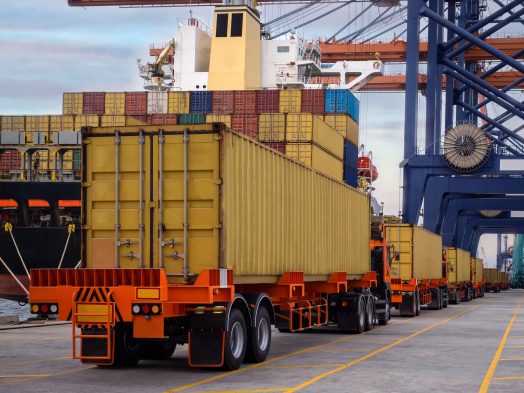How Recent Economic Conditions are Affecting Truckload Rates
Truckload rates refer to the pricing structure for transporting a full truckload of goods from one location to another. When a shipment fills an entire trailer or truck, it is considered a truckload shipment.
Truckload rates are usually based on the distance traveled, the weight and volume of the goods being transported, and the type of goods—large fluctuations in truckload rates can usually be traced back to shifting market conditions.
The many supply chain disruptions in the past few years have caused high fluctuations in truckload rates and overall transportation costs.
RATES HAVE DECLINED IN 2023, SO FAR
Over the last year, truckload spot rates have generally declined. A slight increase happened in May 2023, related to the Memorial Day holiday—which has not been sustained. Projections are that rates will remain low until the holiday rush.
Looking at Q1 of 2023, year-over-year the rates are about 25% down. The primary cause for this decline is softened demand—consumers are buying less because of sharp inflation.
With discretionary consumer spending down, the need to restock goods has also declined. Most brands are reporting high inventory levels due to diminished demand. Shippers are not transporting products as much, which has driven down transportation needs and truckload demand, and ultimately costs.
TRUCKLOAD RATE PROJECTIONS FOR PEAK SEASON, AND BEYOND
Shippers can expect truckload rates to rise leading up to peak season. The winter holiday sales cycles, namely Black Friday and Cyber Week, historically create a surge of freight volume. It is expected that 2023 will be no different, even given the soft market. Expect truckload rates to rise leading up to, and during, Q4—but it again any cost increases will likely be related to the holiday season, and short lived.
The key to when the rates will start rising is related to when the sell-through of the existing over-stocked inventory happens. Supply chain managers have backed off writing purchase orders until on-hand goods are sufficiently depleted. At that point, demand will start to increase, and the market will reset. It appears likely this may be in the latter half of 2024.
UNKNOWN FACTORS THAT AFFECT COSTS
It’s important to note that truckload rates are subject to market fluctuations and can change based on supply and demand dynamics in the transportation industry.
Factors such as fuel prices, capacity, and equipment/labor availability can impact truckload rates and cause them to fluctuate.
The market dictates fuel costs and driver availability. 2022 saw record high fuel prices, which drove up all transportation costs. The labor shortage only added to those price increases and shippers got stuck with sky high surcharges from shipping carriers as a result.
Shippers may currently feel a reprieve from those higher rates, but costs can go up at any time based on these factors that no one can accurately predict.
HOW ARE TRUCKLOAD RATES CALCULATED?
Most carriers quote truckload rates as a flat fee per mile, additional charges are often included for many reasons. Commonly extra fees are incurred from add-on services like loading and unloading or using specialized equipment. Accessorial fees and surcharges may also be added.
Truckload rates can also vary depending on the shipping services required—any use of specialized equipment, extended routes, or expedited delivery will generate higher costs.
To get accurate and up-to-date truckload rates for a specific shipment, it is recommended to contact freight brokers, transportation companies, or logistics providers who can provide customized quotes based on your specific requirements and the prevailing market conditions.
Author’s Bio
Shawn Compton is vice president of Transportation at Fremont, California-based DCL Logistics. An authentic leader with tremendous achievements in the realm of logistics and fulfillment operations, Compton earlier in his career developed relational database applications such as warehouse management systems and a parcel manifest system approved by the U.S. Postal Service.





Leave a Reply